top of page

Turmeric Powder
Turmeric powder is a vibrant, golden-yellow spice derived from the rhizomes of the Curcuma longa plant, native to South Asia. Widely utilized in culinary and medicinal practices for centuries, it boasts a distinct earthy aroma and a slightly bitter, warm flavor profile with hints of ginger and orange. Beyond its culinary uses in curries, soups, and stews, turmeric powder is renowned for its potent medicinal properties, attributed mainly to its active compound, curcumin. It's revered for its anti-inflammatory, antioxidant, and antimicrobial properties, making it a staple in traditional medicine practices worldwide. Additionally, its vibrant color lends itself to use as a natural dye and cosmetic ingredient. Turmeric powder encapsulates centuries of cultural heritage and continues to be celebrated for both its culinary allure and its health-promoting benefits.

Red Beans (Rajma)
Red beans, commonly known as rajma, are a staple legume in many cuisines, particularly in South Asian and Latin American cooking. These kidney-shaped beans boast a rich, deep red hue and a creamy texture when cooked. Rajma is prized for its versatility and nutritional value, being a significant source of plant-based protein, fiber, and essential minerals like iron and potassium.
In culinary applications, red beans add hearty flavor and substance to a wide range of dishes. They're often featured in traditional Indian cuisine, where they're simmered in a savory tomato-based sauce with aromatic spices like cumin, coriander, and garam masala to create the beloved dish known as rajma masala. In Latin American cuisines, particularly in regions like Mexico and the Caribbean, red beans are used in dishes like red beans and rice, soups, stews, and salads, offering a nutritious and satisfying meal option.
Beyond their culinary appeal, red beans are celebrated for their health benefits, including promoting heart health, aiding digestion, and supporting weight management. Whether enjoyed in a comforting stew or spiced up in a zesty salad, red beans (rajma) are a flavorful and nutritious addition to any diet.
In culinary applications, red beans add hearty flavor and substance to a wide range of dishes. They're often featured in traditional Indian cuisine, where they're simmered in a savory tomato-based sauce with aromatic spices like cumin, coriander, and garam masala to create the beloved dish known as rajma masala. In Latin American cuisines, particularly in regions like Mexico and the Caribbean, red beans are used in dishes like red beans and rice, soups, stews, and salads, offering a nutritious and satisfying meal option.
Beyond their culinary appeal, red beans are celebrated for their health benefits, including promoting heart health, aiding digestion, and supporting weight management. Whether enjoyed in a comforting stew or spiced up in a zesty salad, red beans (rajma) are a flavorful and nutritious addition to any diet.

Toor Dhal
Toor dal, also called pigeon pea dal, is a staple legume in Indian cuisine. It's rich in protein and nutrients like folate and iron. Cooked into a creamy stew with spices, it's served with rice or flatbreads. Beyond its delicious taste, it's valued for its health benefits, aiding digestion and boosting energy.

Sago Rice
Sago rice, also known as sabudana or tapioca pearls, is a starchy product used in South and Southeast Asian cuisines. It's prized for its soft, chewy texture when cooked and is used in both sweet and savory dishes. Commonly enjoyed during fasting periods, it provides a quick source of energy and is gluten-free.

Mot gram
"Discover the nutritious powerhouse of Mot gram, also known as moth beans. Packed with protein and essential nutrients, Mot gram is a versatile ingredient in Indian cuisine, ideal for soups, curries, and salads. Explore its health benefits and culinary uses today!"
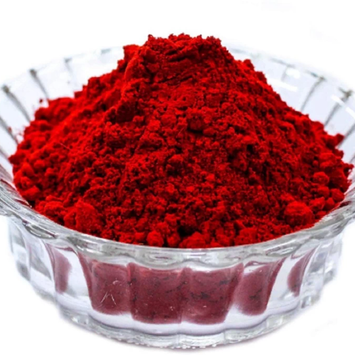
Kumkum
Kumkum is a vibrant red powder used in Hindu religious and cultural practices. It holds symbolic significance and is often applied to the forehead as a mark, representing auspiciousness, blessings, and devotion. Beyond its religious use, kumkum is also employed in traditional ceremonies and festivals, adding color and symbolism to various rituals.

Kabul Channa
Kabul Channa, also known as Kabuli chickpeas, are a beloved staple in Afghan cuisine. These creamy, nutty legumes are prized for their versatility and rich taste. Whether used in hearty stews, spicy salads, or traditional dishes, Kabul Channa adds a delicious and nutritious touch to any meal.

Kesari saffron color
Kesari saffron color is a vibrant, golden hue inspired by the exotic spice saffron. It embodies the warmth and richness of saffron, evoking images of sunsets and spices. Used in various cultural and culinary contexts, Kesari saffron color adds a touch of elegance and sophistication to any design or dish.

Green Gram
Green gram, also known as mung beans, is a small, green legume commonly used in Asian cuisine. These nutritious beans are packed with protein, fiber, and essential vitamins and minerals. With a mild, slightly sweet flavor, green gram is versatile and can be used in a variety of dishes, including soups, curries, salads, and even desserts. It's prized for its health benefits and delicious taste, making it a popular ingredient in many culinary traditions.

Green Peas
Green peas are vibrant, tender legumes known for their sweet flavor and versatility in cooking. Packed with nutrients like vitamins, minerals, and fiber, they're not only delicious but also nutritious. Whether enjoyed fresh or frozen, green peas can be added to a wide range of dishes, including soups, salads, stir-fries, and curries. Their bright color and fresh taste make them a favorite ingredient in both savory and sweet recipes, adding a burst of flavor and texture to any meal.

Horse Gram
Horse gram is a type of legume known for its nutty flavor and high nutritional content. Rich in protein, iron, and fiber, it's valued for its health benefits. Commonly used in Indian cuisine, particularly in southern regions, horse gram can be cooked into soups, stews, or curries. Its hearty texture and earthy taste make it a satisfying addition to vegetarian and vegan dishes. Additionally, horse gram is celebrated for its potential medicinal properties, including aiding in weight loss and improving digestion.

Fried Gram
Fried gram, also known as roasted chana dal or dalia, is a popular snack in Indian cuisine. These crunchy, golden-brown gram kernels are made from split and roasted chickpeas, offering a satisfyingly crispy texture and a nutty flavor. Fried gram is often seasoned with spices like salt, chili powder, or chaat masala, enhancing its taste and making it an irresistible savory treat. It's enjoyed on its own as a crunchy snack or used as a topping in chaats, salads, and savory dishes. Rich in protein and fiber, fried gram is not only delicious but also provides a satisfying and nutritious snack option.

Green Gram Dhal
Green gram dal, made from split and skinned green gram, is a nutritious and versatile lentil widely used in Indian cuisine. With a mild, slightly sweet flavor, it's rich in protein and fiber, making it a healthy addition to soups, stews, and curries. Enjoyed for its quick cooking time and numerous health benefits, green gram dal is a beloved ingredient in many dishes.

Cow peas
Cowpeas, also known as black-eyed peas, are a type of legume cultivated for their edible beans. With a distinct black spot on their creamy skin, they offer a slightly nutty flavor and a tender texture when cooked. Commonly used in cuisines around the world, cowpeas are versatile and nutritious, packed with protein, fiber, vitamins, and minerals. They can be incorporated into soups, stews, salads, and side dishes, adding both flavor and nutritional value to meals. Enjoyed for their delicious taste and health benefits, cowpeas are a popular choice for those looking to enhance their diet with plant-based protein.
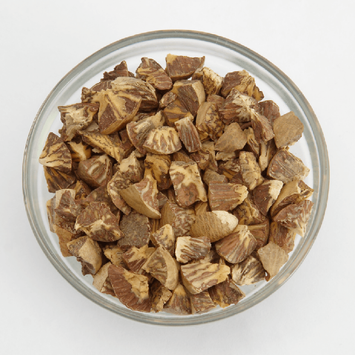
Broken betel nut
Broken betel nut refers to the fragmented pieces of the Areca catechu palm fruit, commonly known as betel nut or areca nut. This nut is traditionally chewed for its stimulating effects, especially in various Asian cultures. When the betel nut is broken into smaller pieces, it's often used in the preparation of traditional remedies, cultural practices, or as an ingredient in certain recipes. While betel nut consumption is associated with cultural and ceremonial significance, it's important to note that excessive use can lead to health risks, including addiction and oral health issues.

Betel nut
Betel nut, scientifically known as Areca catechu, is the seed of the Areca palm tree, commonly chewed for its stimulant effects, especially in parts of Asia. Wrapped in a betel leaf along with slaked lime and often tobacco, it's chewed for its mild psychoactive properties, which can include increased alertness and a sense of well-being. While culturally significant in many regions, regular use of betel nut has been linked to various health risks, including oral cancers, addiction, and cardiovascular issues.

Camphor
Camphor is a crystalline substance derived from the wood of the camphor tree, scientifically known as Cinnamomum camphora. It has a strong, aromatic odor and is commonly used in various cultural, religious, and medicinal practices. In religious ceremonies, camphor is often burned as incense for its purifying and cleansing properties. It's also used in traditional medicine for its analgesic and anti-inflammatory effects, and in topical ointments for its cooling sensation. However, it's important to use camphor with caution, as it can be toxic if ingested in large quantities.

Cooking Soda
Cooking soda, also known as baking soda or sodium bicarbonate, is a versatile ingredient used in cooking, cleaning, and various household applications. In cooking, it acts as a leavening agent, causing doughs and batters to rise when combined with acidic ingredients like vinegar or buttermilk. Additionally, it can be used to tenderize meat, enhance browning, and neutralize acidic flavors in dishes. Beyond the kitchen, baking soda is valued for its cleaning and deodorizing properties, often used in homemade cleaning solutions and personal care products. Its ability to absorb odors and remove stains makes it a staple in many households worldwide.
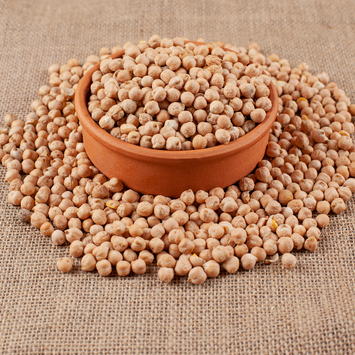
Bengal Gram
Bengal gram, also known as chana dal or split chickpeas, is a nutritious legume widely used in Indian cuisine. With its mild, nutty flavor and creamy texture when cooked, Bengal gram is a versatile ingredient in soups, stews, curries, and salads. Rich in protein and fiber, it's valued for its nutritional benefits and culinary versatility.

Black Gram
Black gram, also known as urad dal or black lentils, is a versatile legume widely used in Indian cuisine. With its distinct flavor and creamy texture, it's a key ingredient in dishes like dal makhani and idli/dosa batter. Rich in protein and fiber, black gram is prized for its nutritional value and culinary versatility.

Black gram dhal
Black gram dal, also known as urad dal or black lentils, is a staple in Indian cuisine. Made from split and skinned black gram, this dal offers a rich, earthy flavor and a creamy texture when cooked. It's packed with protein, fiber, and essential nutrients, making it a nutritious addition to soups, stews, curries, and savory snacks like vadas. Loved for its versatility and health benefits, black gram dal is a beloved ingredient in Indian cooking.

Bengal gram dhal
Bengal gram dal, also known as chana dal, is a popular pulse in Indian cooking. It's made from split and skinned Bengal gram, offering a mild, nutty flavor and creamy texture when cooked. Rich in protein and fiber, it's a nutritious addition to soups, stews, curries, and salads. Enjoyed for its versatility and health benefits, Bengal gram dal is a staple in many kitchens.
Daily Essentials
Spices

Soump (Fennel seeds)
Fennel seeds, also known as "soump," are small seeds with a sweet, licorice-like flavor and subtle aroma. Used in various cuisines worldwide, they add depth to dishes like soups, stews, and baked goods. Additionally, fennel seeds are valued for their digestive benefits and are often enjoyed as a post-meal aid or brewed into herbal teas.

Marathi moggu | Sambar Moggu
Marathi moggu is a spice native to the southern regions of India, particularly Karnataka and Andhra Pradesh. It is also known as Kapok Buds or Marathi moggu, and it is derived from the fruit of the Kapok tree (Ceiba pentandra). These dried flower buds are used to add a unique flavor and aroma to various South Indian dishes, including curries, stews, and spice blends like garam masala. Marathi moggu has a slightly sweet and woody flavor with hints of cinnamon and cloves, making it a distinctive ingredient in Indian cuisine.

Black Pepper
Black pepper, a versatile spice derived from dried berries of the Piper nigrum vine, offers a bold, pungent flavor with earthy undertones. Widely used in global cuisine, it enhances savory dishes like soups, stews, meats, and salads, adding depth and heat. Beyond its culinary role, black pepper is valued for potential health benefits, including aiding digestion.
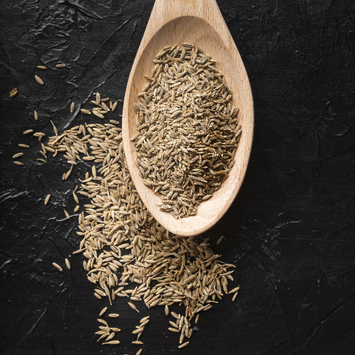
Jeera (cumin)
Jeera, commonly known as cumin, is a staple spice in cuisines worldwide. These small, elongated seeds have a warm, earthy flavor with a hint of citrus and are a key ingredient in many savory dishes. Ground cumin is often used as a spice in curries, soups, stews, and spice blends like garam masala. Whole cumin seeds are frequently toasted or fried to release their aromatic oils before being added to dishes. Beyond its culinary uses, cumin is also valued for its potential health benefits, including aiding digestion and promoting overall well-being.

Mustard Seeds
Mustard seeds, small and pungent, are versatile spices used in various cuisines. Available in yellow, brown, and black varieties, they add depth and heat to dishes. Used whole or ground, they are prized for their aromatic properties and potential health benefits, such as anti-inflammatory effects.

Mug nut (Nutmeg)
Mug nut, commonly known as nutmeg, is a spice derived from the seed of the Myristica fragrans tree. It has a warm, aromatic flavor with hints of sweetness and a slightly nutty taste. Nutmeg is often used in both sweet and savory dishes, adding depth and complexity to recipes like baked goods, sauces, soups, and beverages. In addition to its culinary uses, nutmeg is also valued for its potential health benefits, including digestive support and anti-inflammatory properties. However, it should be used in moderation due to its potency. Overall, mug nut (nutmeg) is a versatile spice that adds warmth and flavor to a wide range of dishes.

Japathre/Japathri (Nutmace)
Japathre or Japathri, also known as nutmeg mace, is a spice derived from the outer covering of the nutmeg seed. It has a distinctive flavor and aroma, slightly milder than nutmeg, with hints of sweetness and warmth. Japathre is often used as a flavoring agent in both sweet and savory dishes, including baked goods, desserts, curries, soups, and beverages. It adds depth and complexity to recipes, enhancing their overall flavor profile. Additionally, Japathre is valued for its potential health benefits, including digestive support and antioxidant properties. Overall, Japathre (nutmeg mace) is a versatile spice that adds a unique and aromatic touch to a variety of culinary creations.
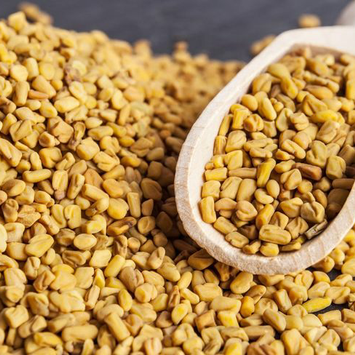
Fenugreek (Mentya)
Fenugreek, or "Mentya," is a versatile herb with a slightly bitter taste and sweet aroma. Its seeds and leaves are commonly used in Indian and Mediterranean cuisines to add depth to dishes like curries, stews, and salads. Beyond its culinary uses, fenugreek is valued for its potential health benefits, including aiding digestion and regulating blood sugar levels.

Dhaniya (Coriander)
Dhaniya, also known as coriander, is a versatile herb with a fresh, citrusy flavor and aromatic fragrance. Its leaves, known as cilantro, are commonly used as a garnish or ingredient in cuisines around the world, adding brightness to dishes like soups, salads, and curries. The seeds of the coriander plant are also used as a spice, providing a warm, citrusy flavor to spice blends, curries, and pickles. Dhaniya is prized for its culinary versatility and is also valued for its potential health benefits, including aiding digestion and reducing inflammation.

Cloves
Cloves are aromatic flower buds of the Syzygium aromaticum tree, prized for their intense flavor and fragrance. With their warm, sweet, and slightly peppery taste, cloves are used in both sweet and savory dishes around the world. They add depth to recipes like curries, stews, baked goods, and beverages. Additionally, cloves are valued for their potential health benefits, including anti-inflammatory and antimicrobial properties. Overall, cloves are a versatile spice that enhances the flavor of a wide range of culinary creations.

Bay Leaves
Bay leaves are aromatic leaves from the bay laurel tree, commonly used as a seasoning in cooking. With their herbal, slightly floral aroma and subtle flavor, bay leaves add depth to soups, stews, sauces, and braises. These dried leaves are often added whole to dishes during cooking and removed before serving to impart their essence. Bay leaves are prized for their ability to enhance the flavor profile of savory recipes, lending a distinctive and nuanced taste to culinary creations.

Cinnamon Sticks
Cinnamon sticks are fragrant and flavorful spice obtained from the inner bark of several trees from the genus Cinnamomum. They are widely used in cooking and baking for their warm, sweet, and woody aroma. Cinnamon sticks add depth and complexity to both sweet and savory dishes, including desserts, beverages, curries, and stews. They can be used whole to infuse flavor or ground into powder for a more intense taste. Cinnamon sticks are also valued for their potential health benefits, including anti-inflammatory and antioxidant properties. Overall, they are a versatile spice that enhances the flavor and aroma of a wide range of culinary creations.

Cardamom
Cardamom is a highly aromatic spice derived from the seeds of plants in the genera Elettaria and Amomum. It is known for its intense, slightly sweet flavor with hints of citrus and herbal notes. Widely used in both sweet and savory dishes, cardamom adds depth and complexity to recipes such as curries, rice dishes, baked goods, and beverages. It is available in two main varieties: green cardamom, prized for its fresh and floral flavor, and black cardamom, known for its smoky and bold taste. Beyond its culinary uses, cardamom is also valued for its potential health benefits, including aiding digestion and freshening breath. Overall, cardamom is a versatile and beloved spice that adds a unique and aromatic touch to a wide range of culinary creations.
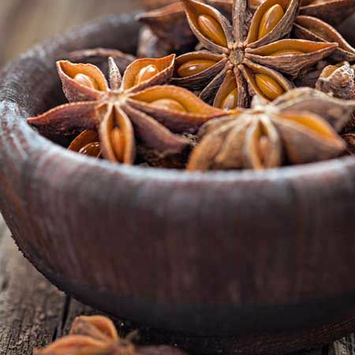
Anise star
Star anise is a distinctive spice with a sweet, licorice-like flavor and a warm, aromatic scent. It is derived from the fruit of the Illicium verum tree and is characterized by its star-shaped appearance. Star anise is commonly used in both sweet and savory dishes, imparting its unique flavor to recipes such as soups, stews, marinades, and baked goods. It is also a key ingredient in various spice blends, including Chinese five-spice powder. Beyond its culinary uses, star anise is valued for its potential health benefits, including its antioxidant and antimicrobial properties. Overall, star anise is a versatile spice that adds depth and complexity to a wide range of dishes.
Dry Fruits

Almond / Badam
Almonds, also known as badam, are nutritious nuts with a rich, buttery flavor and crunchy texture. They are packed with protein, healthy fats, fiber, vitamins, and minerals, making them a popular and nutritious snack. Almonds are also used in various culinary applications, including baking, cooking, and as a topping for dishes like salads and desserts. Additionally, almond milk, made from ground almonds and water, serves as a dairy-free alternative in many recipes. Beyond their culinary uses, almonds are valued for their potential health benefits, including supporting heart health, aiding weight management, and promoting skin health. Overall, almonds are a versatile and delicious ingredient that adds both flavor and nutrition to a wide range of dishes.

Pista Salted/Plain
Salted or plain pistachios, known as "pista," are a popular snack packed with protein, healthy fats, and essential nutrients. Enjoy them as a savory treat or a natural, nutty delight in various recipes.

Kajura Wet/Dry (Dates)
Wet or dry, dates, also known as "kajura," are a naturally sweet fruit enjoyed worldwide. "Wet" refers to fresh, soft dates, while "dry" indicates the dried variety. Both types offer a rich, caramel-like flavor and are packed with nutrients like fiber, vitamins, and minerals. Whether eaten as a snack or used in cooking and baking, dates provide a delicious and nutritious addition to your diet.

Dry Grapes
Dry grapes, also known as raisins, are dried grapes that offer a sweet and slightly tangy flavor. They come in various colors, including dark brown, golden, and green. Rich in natural sugars, fiber, and antioxidants, dry grapes are a nutritious snack and versatile ingredient in cooking and baking. Enjoy them on their own, mixed into trail mixes, or added to oatmeal, salads, baked goods, and savory dishes for a burst of sweetness and texture.

Cashew Pcs./Full
Cashews are creamy and buttery nuts enjoyed worldwide for their rich flavor and crunchy texture. Packed with protein, healthy fats, vitamins, and minerals, they offer numerous health benefits. Whether eaten raw, roasted, or used in cooking and baking, cashews add a delicious nutty taste and creamy texture to dishes like stir-fries, curries, salads, and desserts. They are also commonly used to make dairy-free alternatives like cashew milk and cashew cheese. Versatile and nutritious, cashews are a beloved ingredient in many cuisines and dietary preferences.
Seeds and Nuts

Poppy Seeds
Poppy seeds are tiny, kidney-shaped seeds derived from the opium poppy plant. They have a mild, nutty flavor and are often used as a culinary spice and decoration. Poppy seeds are commonly used in baking, adding a subtle crunch and flavor to bread, pastries, and desserts. They are also used in savory dishes such as curries, salads, and noodle dishes, as well as in spice blends and condiments. Additionally, poppy seeds are valued for their potential health benefits, including providing essential nutrients like calcium, magnesium, and phosphorus. Overall, poppy seeds are a versatile and nutritious ingredient that adds texture and flavor to a variety of dishes.

Ground Nut Seeds
Groundnut seeds, also known as peanuts, are a popular and versatile legume enjoyed worldwide for their rich flavor and crunchy texture. Despite their name, peanuts are not true nuts but rather belong to the legume family. They are often roasted and consumed as a snack, either salted or unsalted. Groundnut seeds are also commonly used in cooking and baking, adding depth and flavor to dishes like curries, sauces, salads, and desserts. Peanut butter, a spread made from ground peanuts, is another popular way to enjoy this nutritious ingredient. Groundnut seeds are rich in protein, healthy fats, vitamins, and minerals, making them a valuable addition to a balanced diet.

Black Sesame
Black sesame seeds are small, flat seeds with a rich, nutty flavor and a striking black color. They are commonly used in Asian cuisines, particularly in dishes from China, Japan, and Korea. Black sesame seeds are often sprinkled on top of dishes or used as a garnish to add flavor and visual appeal. They are also ground into a paste and used in various sweets and desserts, such as black sesame mochi, sesame balls, and sesame paste soup. Beyond their culinary uses, black sesame seeds are also valued for their potential health benefits, including being rich in antioxidants and essential nutrients like calcium, iron, and magnesium. Overall, black sesame seeds are a versatile and nutritious ingredient that adds depth of flavor and texture to a wide range of dishes.
Check out our products

bottom of page